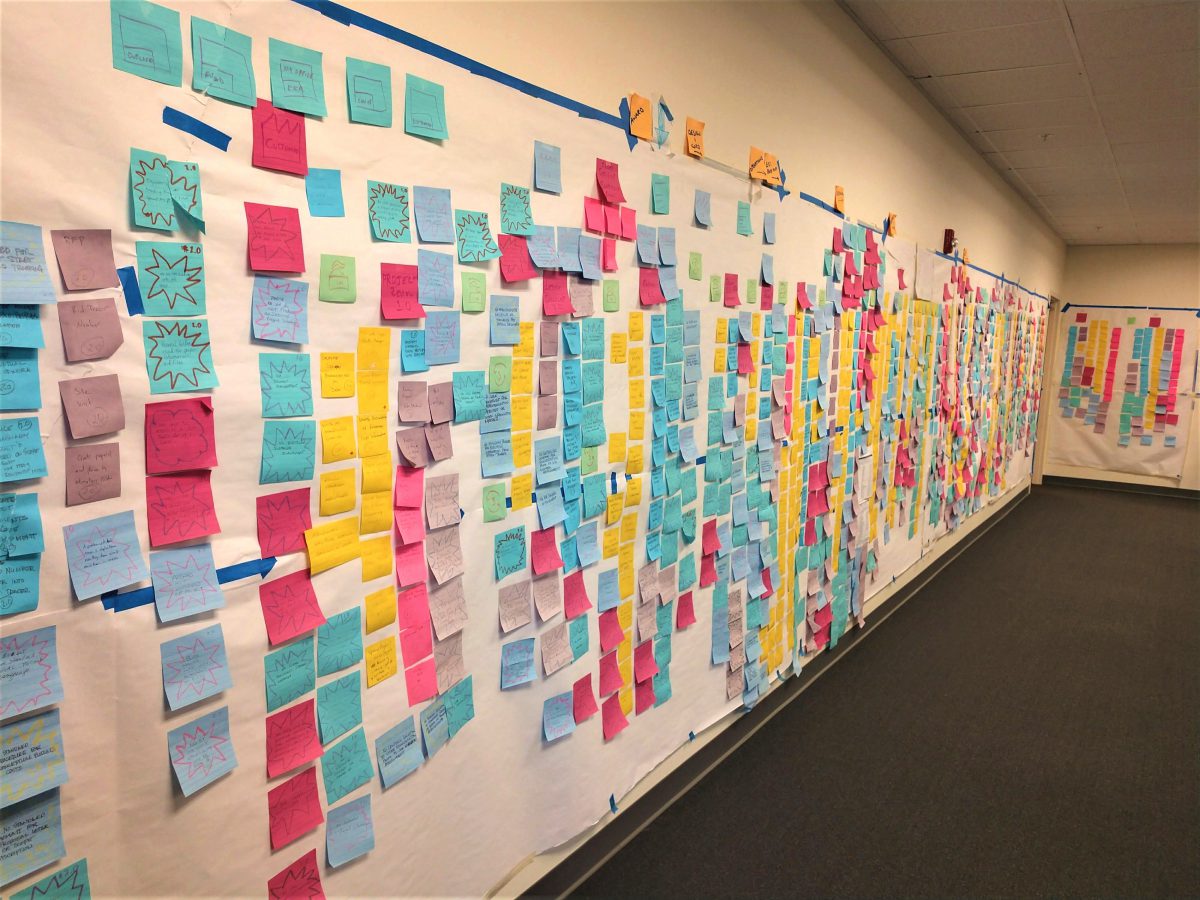How Interstate Electrical Services Became a Leader in Lean Construction
0%
Editor’s note: The following blog post is an article by one of our clients, Billerica, Mass.-based Interstate Electrical Services. The article originally ran in Construction Dive on Feb. 12 and is being re-run here with permission from both Interstate Electrical Services and Construction Dive. This is an excellent piece that gets to the heart of managing data in the construction industry.

Paper timecards. Hard copy spreadsheets. Dozens of phone calls to track down simple information. Does this sound familiar?
The construction industry is notoriously resistant to change. Many construction-related businesses still run on pen, paper, and a general sense of ‘organized chaos.’ In the current market, shortcomings of this archaic approach can affect not only your employees, but your bottom line as well.
With the technology available today, data is the answer — if you can harness it correctly. Information overload can drown you in numbers, but if you talk to the right people, ask the right questions, and learn from your current pain points, you will set your organization up for success.

At Interstate Electrical Services, we made the decision to change how we approach every workflow, from project management to business intelligence to everyday HR operations. Like other commercial electrical contractors, we were facing a labor shortage, a construction boom, and increasingly nimble competition. To address these issues, we adopted the lean construction methodology, where we use data as a key component to build a healthier and more efficient workflow, while maximizing the effectiveness of our workforce. The majority of our projects include extensive prefabrication, so planning ahead and having real-time access to information is extraordinarily important.
Contractors using lean construction data methods report:
- Higher quality construction (85%)
- Greater Customer Satisfaction (80%)
- Greater Productivity (77%)
- Improved Safety (77%)
We’ve learned a thing or two during the transition to becoming “lean” and would like to share three key steps that will help you harness your organization’s data to reduce time spent down in the weeds and increase your revenue.
- Collect — First, you will need to assemble a Lean Leadership team with representation from each department. Because you will be collecting data from every department within the organization, the Lean Leadership team should include members of the executive, administration, sales, finance and marketing teams, as well as representatives from the field teams. The data you collect will give you insight into the organization’s workflows. Examples include:
- Time tracking process
- Workflow for bidding a new project
- Ownership of key information at every stage of the project

At Interstate, we spent over 15 months collecting data, listening to anecdotes, mapping out existing processes, and compiling feedback from across the company. We collected data from every business unit, from every location across New England. It was an intensive process, but absolutely vital because if we missed something at this critical stage, we would not be able to address it later in the process.
- Analyze — Once you’ve finished collecting data from every corner of the organization, it’s time to analyze the information you have gathered. You need to determine where information is being roadblocked and then identify the pain points that should be addressed to make for more nimble workflows. During this step, you will likely find overlap and redundancy. To help you analyze the data you’ve collected:
- Create a visual representation of your most important workflows. The Lean Construction Institute calls this a “Value Stream Map,” which helps identify and evaluate potential improvements or efficiencies.
- Conduct field studies which involve having team members complete a workflow cycle and then inspect current practices to determine inefficiencies or roadblocks.
At Interstate, our Lean Leadership team wrote every single action that happened throughout the life of a project on sticky notes and the findings were staggering. We found that even though we never had a problem with a jobsite location, there was no official process to record a street address when we started a project. There was someone who knew the exact address, but we didn’t have a formalized process to share that information between the guys working at the site, the folks in purchasing, or our billing department. Internally, confirming a single detail could mean talking to a handful of different individuals to ensure accuracy. We also found the departments were more siloed than we initially thought, and a lot of work was being repeated by each department rather than being shared.
- Implement — It’s time to take the data you’ve collected and analyzed and make it work for you. By implementing solutions to the process issues you uncovered and analyzed during the data collection phase, you can develop new policies and procedures to create new, lean workflows.
At Interstate, we built our new workflows by revisiting our Value Stream Map and rearranged the process steps to find a flow that worked for us. Our field teams ran through the updated workflow cycles to determine if any additional changes needed to be made, and we repeatedly tested the workflow until it was the most efficient and least wasteful. We received buy-in from each department to ensure we built the most collaborative and streamlined process possible.
There are a variety of accounting and project management software platforms built specifically for the construction industry (such as Viewpoint) that can help you manage this process with workflow optimization tools.
It is incredibly important that everyone within the organization be on board when implementing new workflow changes. Start with commitment and encouragement from the top executives, through to department heads, managers, and boots on the ground.
Train your workforce to follow the updated guidelines, and make sure any lingering questions are answered. Consistency is key when transitioning your organization to the lean construction methodology.
Ongoing Review

Once the updated workflows are in place, do not stop gathering data. Even though the organization is operating more efficiently, it is important to conduct a three, six, and 12-month review of the new workflows and procedures. Gather feedback from key players in each department to determine what policies and procedures are working and what needs to be adjusted. Not every process will be transitioned seamlessly, but it is important to identify red flags before they turn into larger issues down the road.
With real-time data flowing in continuously from every department at Interstate, we are able to make intelligent decisions on the jobsite, ensure accuracy across the board, and predict what our workload will look like 18 months from now. We are more efficient than ever and we are better positioned to deliver our projects on-time and on-budget.
Interstate harnessed our data to reduce waste and transform our company into a leader in lean construction. If you want to learn more about how we transformed our 53-year-old company into a leader in the industry, we invite you to reach out to us.




